| | Lettuce growing systems | What is aeroponic | What is hydroponic | Growing conditions | Nutrient solution management | Cultivars | Physiological disorders | Cost effectiveness and productivity | Conclusion
Lettuce (Lactuca sativa) has excellent potential as a year-round greenhouse crop. Lettuce, a good source of Vitamin A, E and folacin, is considered a healthy food choice.
Background
Lettuce is one of the most commonly grown greenhouse vegetables in Alberta, after cucumbers, tomatoes and peppers, and the primary product of greenhouse lettuce is the head or leaf.
According to Statistics Canada, the Canadian greenhouse production of lettuce in 2014 was 19.9 hectares. Alberta consumed 21,357 tonnes of lettuce in 2011, about 20 to 30 per cent of Canadian production, yet only 5 per cent of that total was produced in Alberta.
Alberta greenhouse producers could increase lettuce production and replace imports. Profitable greenhouse production depends on growers using production practices that maximize productivity and quality while minimizing costs.
Lettuce Growing Systems
Around the world, different styles of growing systems are used for greenhouse lettuce (Figure 1).
In Alberta, some large commercial greenhouses use a raft system for producing lettuce. The lettuce is grown in styrofoam boards that float in a pool of nutrient solution.
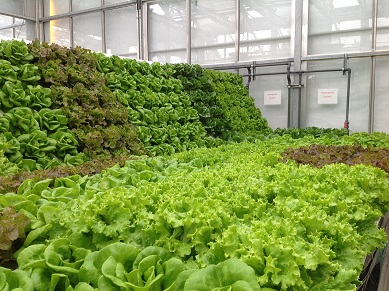
Figure 1. Greenhouse lettuce growing systems
For greenhouse producers, re-circulating aeroponic and hydroponic systems allow for a very effective use of growing space and nutrients, and these systems are well suited to the greenhouse production of high value crops such as lettuce.
What is Aeroponic?
Lettuce can be grown aeroponically in A-frames with a nutrient solution sprayed on the bare roots (Figure 2). Aeroponics is a system where the plant roots are suspended in the air and saturated with a fine mist of nutrient solution at designated time intervals. This technology is designed to minimize water consumption.
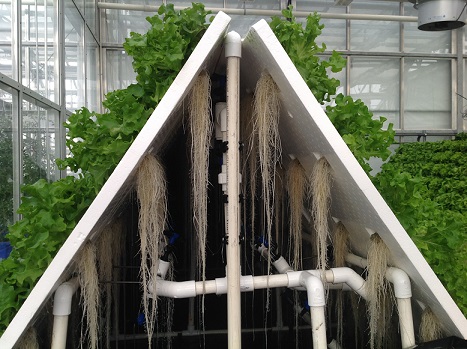
Figure 2. Roots suspended in air in an aeroponic system
With aeroponics, growers can produce lettuce year round, with the potential for more plants per area as well as faster growth and bigger lettuce heads while using less water and nutrient supply.
The development of high performance, automated aeroponic systems for lettuce production signifies an economic advantage for Alberta-based greenhouse production for several reasons:
- improved water use efficiency (low requirement of water to operate against conventional hydroponic methods)
- more growing cycles per year to reduce costs associated with greenhouse production (for example, labour)
- improved integration of automation, re-circulation and space utilization in plant culture
These strengths may provide a cost-effective sustainable production system for greenhouse lettuce.
Potential of aeroponics technique
Aeroponics is a research tool for nutrient uptake, monitoring of plant health and optimization of crops grown in a closed environment. An aeroponic computerized control system will monitor key elements within the crop management targets during the growing season:
- watering spray intervals (time between spray applications)
- spray duration (length of time for each spray application)
- control strategies (nutrient injection and feed recipes)
Using aeroponics, the plants are totally suspended in air and can access up to 100 per cent of the available oxygen in the air (Figure 3).
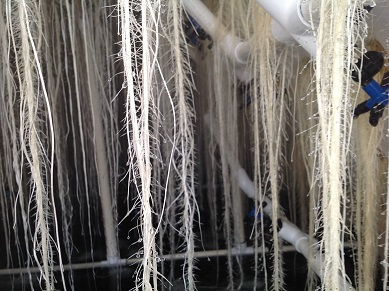
Figure 3. Plant roots are open to the air
Some key elements to note:
- growing method promotes root metabolism and plant growth
- plants grow longer and faster: accelerates biomass growth and reduces rooting time
- use of fine droplets, 20 to 100 microns, produces excessive root hairs
- large droplets, over 100 microns, leads to less oxygen being taken up by the plants
- misting time: 1 to 2 minutes at different interval times up to 3 minutes
- root formation, number of roots, root length all increase as dissolved oxygen increases
- root zone temperature: cool nutrient solution holds more dissolved oxygen (DO) for root uptake – nutrient solution carries dissolved oxygen greater than 7 ppm (parts per million), but nutrient solution temperature must be below 20 °C
- lack of oxygen (O2) can cause root cell death and increase the risk of root disease such as pythium
Root oxygenation and role of oxygen
Good aeration of the re-circulating nutrient solution is essential to provide oxygen to plant roots and reduce both the incidence and severity of root rot diseases. When oxygen levels are low in the root zone, the roots do not take up the nutrients required for growth. The more oxygen present (greater than 7 ppm), the better the nutrient uptake and the better the root system.
However, root zone temperature is very important. If the root zone temperature is high, then the oxygen level will go down. The movement caused by the flow of water in the aeroponic system is usually enough to keep the oxygen level high in the solution.
Aeroponics system design
An A-frame shaped aeroponic system of one movable bench can be built with mounted, fixed spray nozzles connected with 2 cm (3/4 in.) diameter PVC plastic pipe (see Figure 2). In total, the growing area would be 9 m2, with the supporting A-frame reaching 121 cm at the peak.
In an aeroponic production system, the plants are suspended in an enclosed environment by misting the plant roots with an atomized, nutrient-rich water solution using the nozzles (each nozzle puts out 6.8 litres (1.8 gallons) of solution per hour) while the rest of the plant (canopy) sits above the setup.
A nutrient-injection program can consist of two stock tanks plus one acid tank. A high pressure pump delivers nutrients to the roots with a flow rate of 1,363 litres (360 gallons) of solution per hour. Fertilizer and irrigation water are delivered through a fully automated aeroponic nutrient-injection system under the control of a computer system in two nutrient regimes.
Advantages of an aeroponics system
- water use efficiency (80 to 90% less water use in aeroponics versus hydroponics)
- re-use of nutrient solution
- space: plants stack vertically, roof-topping greenhouses
- less weight
- increase water uptake
- excellent aeration
Disadvantages of an aeroponics system
- clogged foggers, pump failure or breakdowns (pipe) going unnoticed may damage plants in a short time
- regular maintenance schedule, filter needs to be kept clean
What is Hydroponic?
Hydroponics is the method growing of plants using water and the essential nutrients required without the presence of soil (Figure 4).
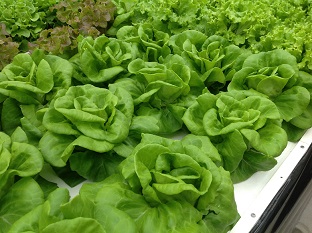
Figure 4. Hydroponic system to grow plants
The demand for hydroponically grown products is increasing fast around the world (Figure 5).

Figure 5. Demand for hydroponically grown produce is increasing
Hydroponics system design
In hydroponic floating raft technology, one movable bench can be built with a total of 9 m2 growing area. The nutrient-rich solution can be delivered to the plants by filling the benches, draining them and then pumping the solution back to the same bench continuously.
Advantages of a hydroponic system
- can grow anywhere and produce crop year-round
- planting out and automated harvesting is easier than with aeroponic system
Disadvantages of a hydroponic system
- if a root disease appears, all plants in the system will be affected, and plant death will occur rapidly
- uses more space and water compared with aeroponic system
Growing Conditions
Temperature and humidity controls are also important for successful lettuce production.
Temperature: Temperature is an important factor at all stages of lettuce growth. Lettuce is a cool weather crop, so long days and hot summer temperatures can cause the crop to “bolt” or go to flower.
During crop growth and production, cooling fans, ventilation and curtain shade cloths are used to maintain a daytime temperature of 16 to 18 °C and a nighttime temperature ranging from 11 to 12 °C, depending on growth stage.
Sudden changes in temperature can favour disease development by causing condensation on leaves or increasing the incidence of tip burn. Lettuce is highly sensitive to freezing, which damages the leaves.
Humidity: Excessive humidity will reduce transpiration, resulting in decreased nutrient transport. A relative humidity (RH) of 70 to 80 per cent is generally targeted during lettuce production.
Nutrient Solution Management
Nutrient solution management allows for accurate control of the fertilizer feed solution, which has a significant effect in increasing productivity and lettuce crop quality.
Two factors have a significant effect on the growth of greenhouse lettuce: concentration of nutrient salts and pH, so these elements need to be tested and monitored regularly. In the winter, lettuce should receive a concentration of nutrient salts EC (Electrical Conductivity) from 1.9 to 2.2 mS/cm and in the summer, 1.6 to 1.8 mS/cm. A pH of 5.8 for the nutrient solution is optimum.
Fertilizer and acid are added to the feed tank to maintain pH and the appropriate nutrient levels for each cultivar and stage of crop development.
The feed target (ppm) of the nutrient solution should be maintained at the following levels:
- nitrate nitrogen 165 ppm
- phosphorus 50 ppm
- potassium 210 ppm
- calcium 180 to 200 ppm
- iron 3 to 5 ppm
- manganese 0.5 ppm
- zinc 0.1ppm
- boron 0.5 ppm
- sodium molybdate 0.05 ppm
Cultivars
Butterhead lettuce
1. Seed company - RIJK ZWAAN
- Alexandria:
- has good size and performance
- popular cultivar in commercial greenhouse lettuce in Alberta
2. Seed company - BAYER
- Frank:
- great shaped lettuce with a well filled head and a good balance of outer leaves
3. Seed company - ENZA ZADEN
- Fairly:
- has remarkable reliable performance under different conditions
- high tolerance to internal tip burn
Oak leaf lettuce
1. Seed company - ENZA ZADEN
- Pagero:
- has highly attractive, nice fresh green colour
- big-sized cultivar has very regular heads
Romaine lettuce
1. Seed company - BAYER
- Intred:
- unique internal red colour
- very nice heart shape, medium size, good shelf life
2. Seed company - BAYER
- Thumper:
- compact little lettuce with a good uniform head shape
- very stable
Physiological Disorders
Tip burn
Tip burn happens in both areoponic and hydroponic systems and with cultivars under supplemental winter lighting (Figure 6).
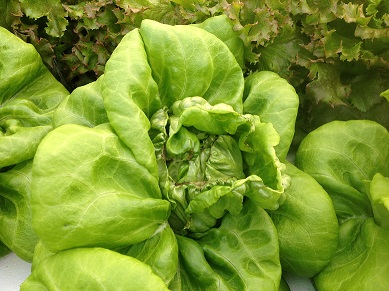
Figure 6. Tip burn on greenhouse lettuce plant
Tip burn of young, inner lettuce leaves is caused by a calcium (Ca) deficiency and is characterized by browning of the edges and tips of the leaves. Calcium is an immobile element and must be taken up in the transpiration stream.
Environmental conditions that reduce the transpiration rate – such as sudden temperature changes, too high relative humidity (RH) too low light or low temperature – can result in tip burn.
Under high RH, the plants are unable to evaporate enough water to enable the transport of minerals (like Ca) to growing plant cells. In this situation, calcium uptake becomes insufficient to reach the newly developing cells, so tip burn symptoms begin to appear. These symptoms will appear even when plenty of water-soluble calcium is in the nutrient solution,
Methods to prevent this physiological disorder:
- Calcium levels in the nutrient solution must be high enough for sufficient calcium uptake by roots, and transpiration rates must be high enough to enable sufficient translocation of calcium ions to the growing tips.
- Increasing ventilation and air circulation with fans will increase transpiration and help keep moisture from accumulating around the leaf surfaces.
- Use low temperature and low light with the formation of the lettuce head.
- Reducing the application of nitrogen, harvesting the lettuce slightly before maturity and maintaining proper humidity will help prevent tip burn.
Cost Effectiveness and Productivity
The initial cost of building an aeroponics system is higher than the initial cost required to build a hydroponics system.
Aeroponics: butterhead lettuce produces 360 heads/cycle at 12 cycles per year, which will produce 4,320 heads per year.
Hydroponics: butterhead lettuce in the same conditions will provide 1,980 heads per year.
There are significant differences between the automated aeroponic and hydroponic systems
(Figure 7).
 | Aeroponic System | Hydroponic System |
| Nutrient Solution | Nutrients in mist of water droplets | Nutrients in H2O solution |
| Water Use Efficiency | Low re-circulating mist of droplets | High re-circulating flow of water |
| Yield | 360 lettuce heads in 9 square meters | 180 lettuce heads in 9 square meters |
| Risk Factor | High | Medium |
Figure 7. Differences between aeroponic and hydroponic systems
Depending on the cultivar, time of the year and supplemental winter lighting, the yield/productivity of the two systems will be quite different (Figure 8).
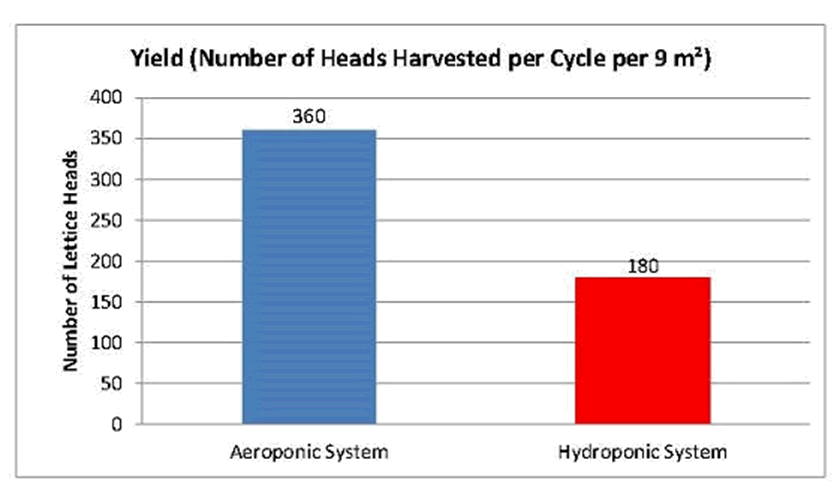
Figure 8. Lettuce yield/productivity differs between areoponic and hydroponic systems
Conclusion
Alberta’s greenhouse industry is positioned for growth through access to new technology. An increasing number of leafy crops like lettuce are being grown hydroponically in more and more places around the world. Aeroponics offers another way to increase greenhouse lettuce production in Alberta.
Prepared by
Nabeel Mohammed
Alberta Agriculture and Forestry
Greenhouse Section
Crop Diversification Centre South
Brooks, Alberta
More information
Alberta Ag-Info Centre
Call toll free 310-FARM (3276)
Website: agriculture.alberta.ca
The development of this factsheet was supported in part by Growing Forward 2, a federal-provincial-territorial initiative.
Source: Agdex 251/15-1. May 2018. |
|